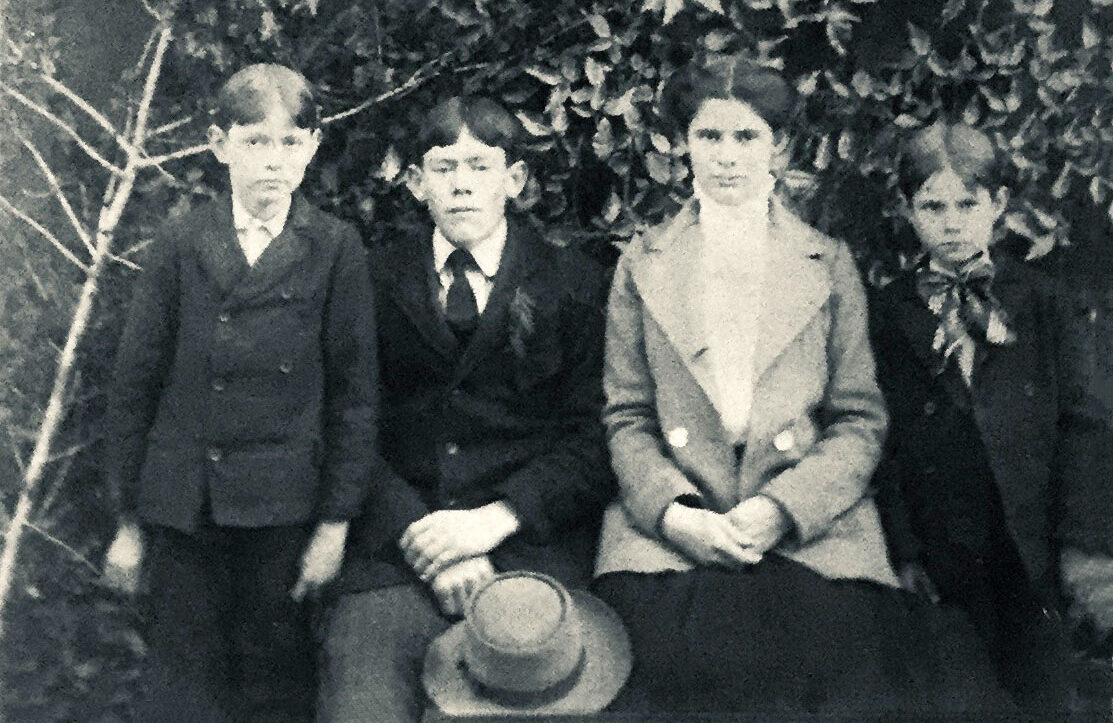
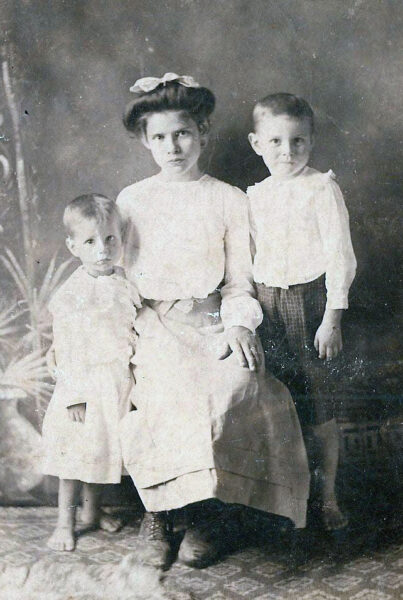
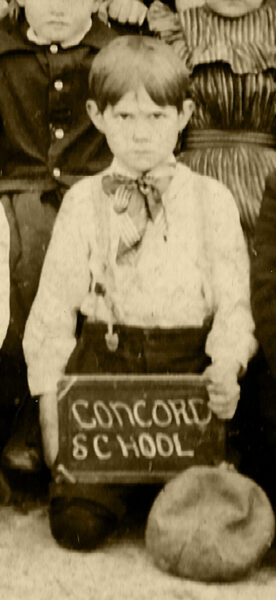

My grandfather, William Bryan Sinclair, left quite a few breadcrumbs for us to follow in order to replicate his life’s journey– mostly due to his own propensity to save everything — documents, photographs, letters, newspaper clippings, and cards. This is the first in a series of posts to relate some of the tales of his long life.
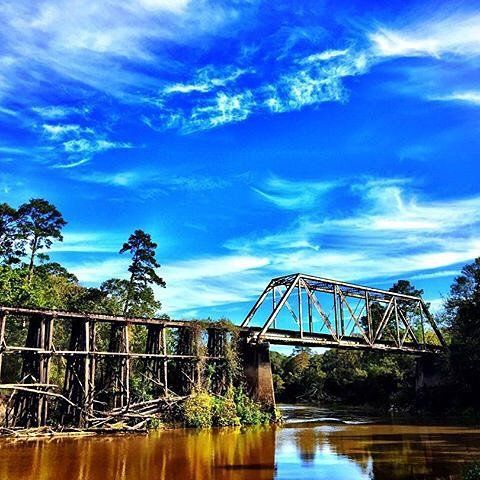
Willie, as he was known as a boy, was born in Rockland, Texas (Tyler County) on May 14, 1901. He was the youngest of six and 19 years younger than his eldest sibling, Pearl. In 1882, his parents started their marital journey in Dublin, Texas where they had their first four children. In 1898, for reasons unknown, the family resettled 275 miles to the east in the Piney Woods southeast of Lufkin, Texas in Angelina County. They bought a small parcel of property and their 5th child, Leonard was born. In 1899, a new railroad bridge started construction in nearby Tyler County, near the small town of Rockland — with job opportunities probably too good to pass up for a struggling farmer with seven mouths to feed. So, Willie’s father, William Barnes (WB) Sinclair, sold his land and again uprooted his family. His work in Rockland was listed as Bridge Carpenter in the 1900 census1. We believe he was working to build a railroad bridge over the Neches River for the Texas & New Orleans Railroad providing a long-needed link between Dallas and Beaumont. The bridge has a very long wooden trestle section that made it a major carpentry project.
So, it was in Rockland, where youngest son, William Bryan, came into the world.
When the bridge was completed, the family moved back to Angelina County, and in 1903, purchased a 170 acre plot of land with a house near the small town of Concord. This eventually became known far and wide as “The Sinclair Place” (in later years, “The Old Sinclair Place”). Willie’s early years revolved around a busy family life and tight-knit community. His eldest sister, Pearl, married when Willie was just a year old. Sister, Kate, followed suit when Willie was 5. However, she was widowed two years later and moved back in with her family.
Tragedy struck the family in 1909 when William Barnes Sinclair died in June of that year. He suffered from Bright’s Disease, a chronic kidney ailment, which made him more susceptible to tuberculosis, and that is what is written on his death certificate. Willie had just turned 8 when he lost his father. In 19102, the whole family, minus Pearl, was living at the Sinclair place and helping their mother, Nancy Ellen, eke out a living to support the family. The boys all dropped out of school after seventh grade, an indication that their time and energy was needed at home. Third sister, Leona, went through high school and completed the requirements to receive her teaching certificate in 1909. She started teaching at the one-room elementary school in Concord. We have a precious photo of Leona’s class with both Leonard and Willie as students — Willie holding up the class sign (above and below).
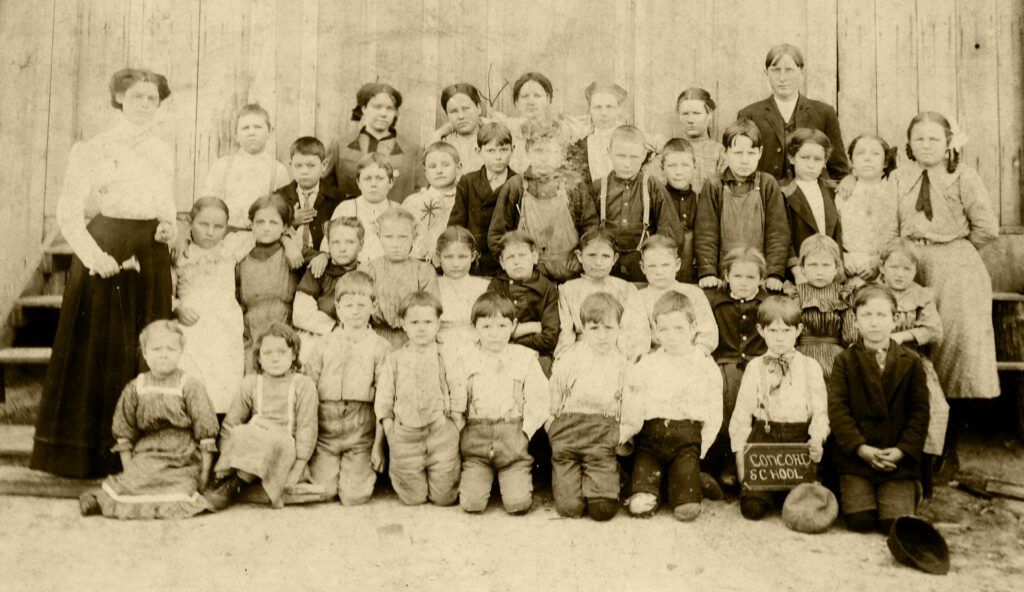
Original photo scanned by Leslie Pilcher; Photo and Bell in possesion of Suzanne Fortenberry, Leona’s grand-daughter.
We don’t know much about the farming they did at the Sinclair Place, but we know they grew all of their own vegetables and livestock. In the letter below, Bill talks about cane, which must refer to sugar cane, although Angelina County is not the ideal place to grow that crop. The homestead was situated in the Piney Woods and we do know that between 1910 and 1920, Nancy Ellen Sinclair executed several leases with timber companies giving them the right to cut trees on parts of their acreage. We have no idea how beneficial that was for family finances, but timber was the largest industry in the county at that time.
As Willie was entering his teens, his elder siblings eventually moved out and on with their own lives. Leona married in 1911, Kate in 1912, Hugh in 1915, and Leonard in 1918. While Pearl, Leona and Hugh stayed nearby, Kate went to Spain and Leonard found work in the oilfields 300 miles away near Eastland, Texas. So, by the time Willie was 17, it was just he and his mother managing the Sinclair place.
In October 1919, he wrote a heart-breaking letter to Leonard pleading for help in finding a job for him in the oilfields. He and his mother were ready to pack up and leave3.
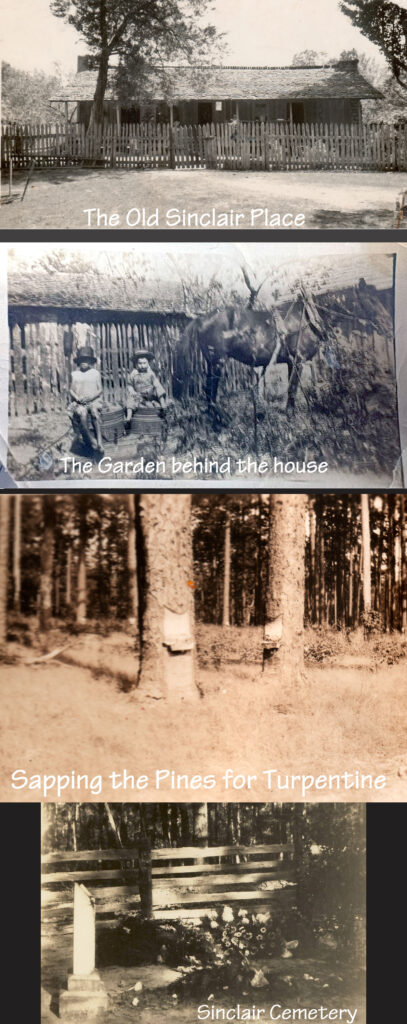
Friday Night October 17, 1919
Leonard Sinclair
Dear brother.
We have written you 3 letters besides this one.
Is there any chance of a job that can work up to a firing (?) job out there.
I am all tore up. I don’t know what to do.
I don’t have no idea of making a crop here next year. It has rained two weeks straight here.
I think I will make up all of the cane. I will go in the hole if I try to make a crop here.
Just think I will not get any thing out of the place until next fall only on cane that we have got now. And that will not go far in the way of making a crop.
I will have to public work all the time to make a crop. And if I public work all the time to make a crop I want something besides tiemaking. I will go to making ties Monday for Jerry Poland. I will stay here until February for I will have to fatten our meat and cure it. I want to trap a while also.
Ma, I think, would rather be somewhere else. She is ready to sell anytime I say go.
I have ordered me a suit today.
Write and tell me what you think.
Bill
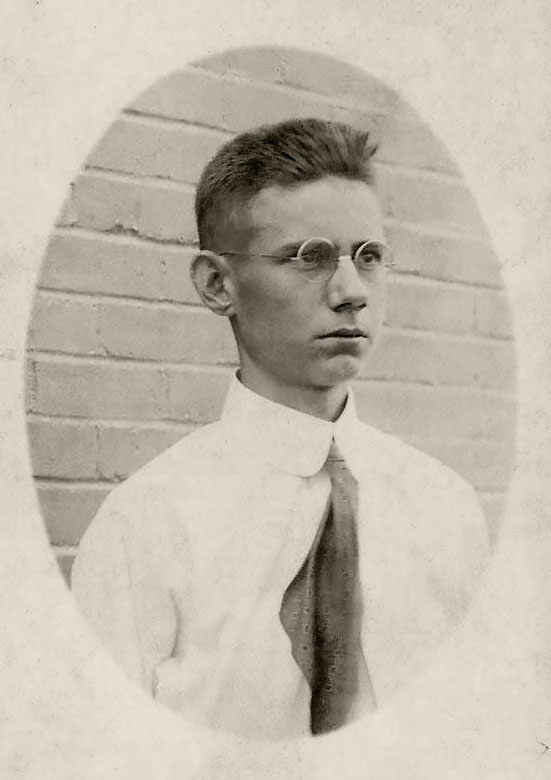
Although his mom always called him Willie, he was now Bill Sinclair. Eighteen years old, with the weight of the world on his shoulders. He had written four letters and he was desperate.
As luck would have it, three months later, on January 12, 1920, Bill started work for the Texas Pacific Coal and Oil Company near Ranger. Undoubtedly, Leonard had something to do with scouting out this opportunity. But, it goes without saying that this was a life-changing moment for Bill Sinclair. Now he had a job with a future and security. He must have felt like the luckiest guy in the world.
Texas Pacific, TP as it was always called, produced almost all of the coal used in Texas in the late 1800’s from a bituminous coal seam near Thurber, Texas (11 miles from Strawn). However, by the 1910’s coal production had diminished and the company smartly diversified into an emerging new energy industry in Texas — oil. TP started looking around Thurber for property to lease, and the nearby city of Ranger offered them acreage if they would drill four test wells. They discovered the Ranger Oil Field in 1917 with the second well. It was a huge oil boom, known as “Roarin’ Ranger”, a key part of the “Wave of Oil” credited for Allied victory in World War I. The population of Ranger grew almost overnight from 1,000 to 30,000 with promises of gainful employment for able-bodied men. TP kept drilling and soon, had oil discoveries in several neighboring counties, putting towns like Caddo, Breckenridge, and Strawn on the map.
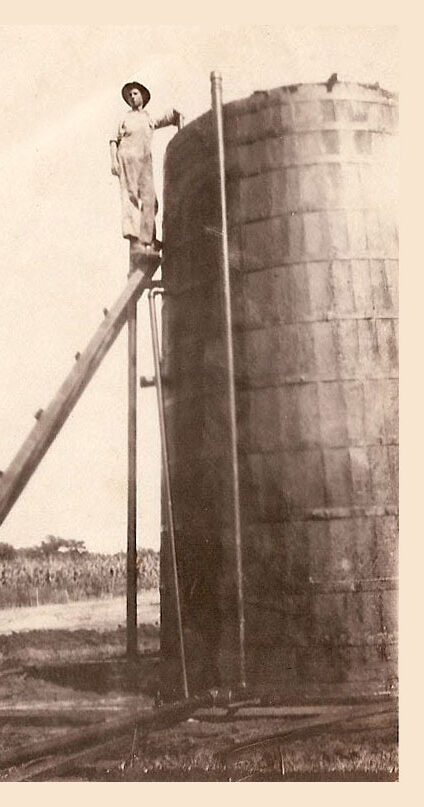
Bill lived in temporary lodging for single men, known as “man-camps” which were one room trailers or hastily-built motel-type structures. And he moved from camp to camp, depending on where he was needed. He called himself a “pipeline engineer” in the 1930 census which meant he built and operated the tank batteries needed to separate the produced oil, gas, and water and the pipelines to transport the oil to a refinery or railroad depot. After these facilities were built, this person (also known as a pumper) would maintain them and gauge the tanks daily to measure new production. I remember, as a girl, riding around with my grandfather as he made his morning rounds from battery to battery, climbing the iron ladders on the sides of the tanks up to the top, lowering a steel tape to determine the fluid level in the tank, and writing the numbers in a little book. Some of those books were found in his workshop in 2021.
So, this is where the dejected and desperate Bill Sinclair landed in 1920 at the age of 18. He probably started work as a common laborer, but the company must have seen potential, because, almost immediately, they sent him to an automotive school in Dallas to learn the mechanics of gasoline engines. Cars had taken over the roads by the 1920’s and, more importantly, were becoming affordable and a necessity for the common man to own. Additionally, the steam powered industrial engines used in the oilfield had converted to diesel power. This expertise would serve Bill well personally, too, as a 1923 Ford Model T was his first major purchase — this car was his pride and joy and featured in almost every photo of him taken in the 1920’s4! The wrench set that came with this car still survives, I’m told.
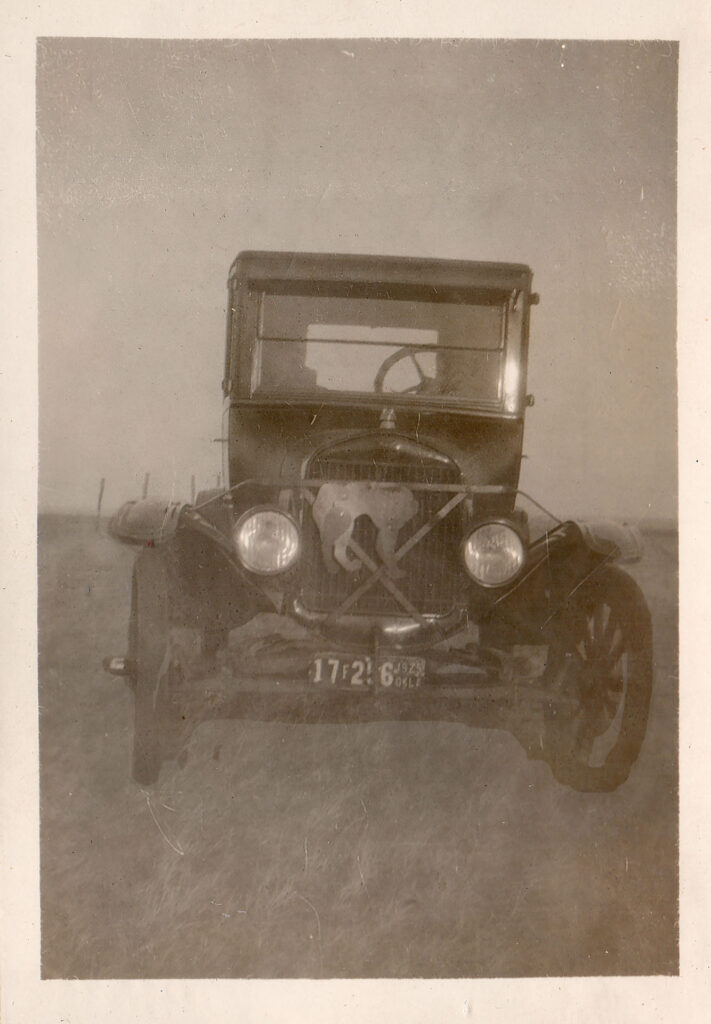
After Automotive School, we don’t know specifically where TP sent Bill to work, but we do know that by 1925, he was working in Garvin County, Oklahoma on facilities for a field TP had discovered there in 1920, the Robberson Oil Field. This field was located in the southwest corner of Garvin County, and was 22 miles southwest of the town of Wynnewood, which happened to be a stop on the main line of the Topeka and Atchison Railroad. So Wynnewood was the likely destination for the pipelines Bill was servicing. And…. it turns out that Wynnewood would be where Bill Sinclair would begin the next, and arguably most important, chapter of his life, because Wynnewood is where Ina Mae Hammond lived.
************************

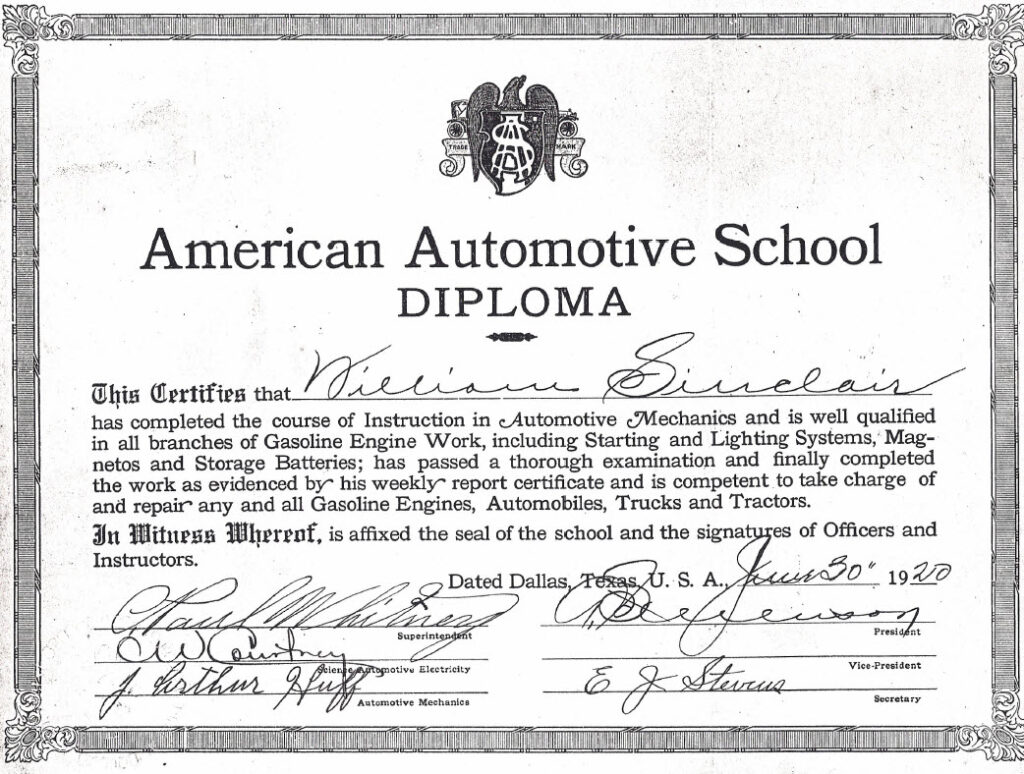
- 1900 United States Federal Census, Texas, Tyler County, ED 111, SD 8, Sheet No 6, Ancestry.com Image 11 of 24. ↩︎
- 1910 United States Federal Census, Texas, Angelina County, Prct 8, ED 9, Sheet No 13, Ancestry.com Image 10 of 16 ↩︎
- This letter was saved by brother, Leonard Sinclair, and in 1981, Leonard’s wife Cora, copied it in her own handwriting and sent the copy to Bill Sinclair. This transcription was made from this copy. ↩︎
- This post on the American Oil and Gas Historical Society Website has fascinating details on the Ranger Oilfield and its impact on World War 1. “Roarin’ Ranger Wins World War I” https://aoghs.org/petroleum-pioneers/roaring-ranger-wins-wwi/#google_vignette ↩︎
- The first photos of this car have Oklahoma plates with 1925 date. ↩︎
